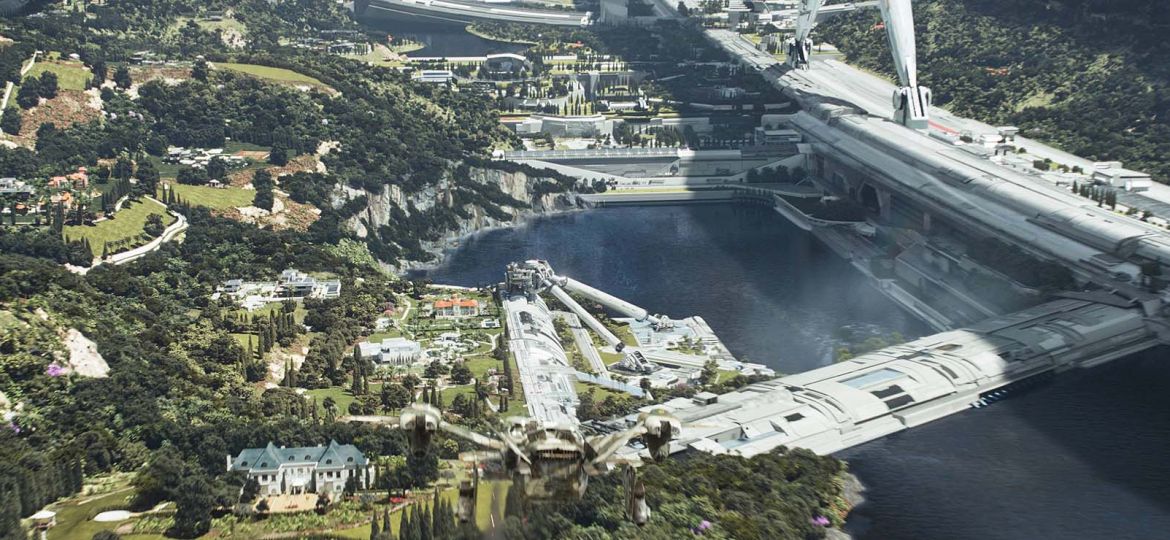
WHY THIS MATTERS IN BRIEF
Astronauts who are exposed to long periods of microgravity suffer health problems when they get back to Earth, an artificial gravity system would replicate the natural gravity of Earth and prevent the problems from occurring.
Microgravity is bad for the bones and muscles. Just ask astronaut Scott Kelly, who lived in space for a year so NASA could run science experiments to see how his body fared in Zero-G, and whose skin has been feeling like it’s been burning ever since.
How astronauts can cope in microgravity environments for months, maybe even years on end is now one of the pressing questions being asked as organisations like Boeing, NASA and SpaceX gear up their efforts to reach Mars.
Then again, NASA has a train of thought that they could avoid the microgravity problem altogether – by creating an artificial gravity system.
A new NASA sponsored study is looking into the feasibility of spacecraft that rotate all the way to Mars which could simulate partial or full Earth gravity – a little like the craft in the movie Elysium, but more utilitarian and with fewer billionaires.
Their idea at the moment is to start with a small modular spacecraft that could grow in size over time, just like the International Space Station (ISS) does today, and the larger the rotating craft gets, the easier it’ll be for it to simulate full Earth gravity.
NASA’s Innovative Advanced Concepts (NIAC) program, which nurtures and experiments with ideas that are beyond the agency’s current mission “horizon” planning has just pumped another $500,000 into developing the first proof of concept systems, based on a concept called tensegrity. However, if all of the funding was in place today then lead principal investigator Robert Skelton has said he could have a prototype in low-Earth orbit in about three to four years.
“The funding may take 5 or 10 years, and maybe a private company will decide to do this,” says Skelton, a distinguished research professor at the Texas A&M Engineering Experiment Station in College Station, Texas.
The proposed tensegrity design uses a lattice of struts to create a very lightweight structure. For materials, Skelton has said he and his team will most likely use a tough plastic called ultra-high-molecular weight polyethelene, currently found in applications ranging from body armour to spine implants and PVC windows. The weight saving from tensegrity engineering and light materials would reduce launch costs while still creating a safe structure.
NASA has recently been playing around with sending inflatable modules to the ISS, which are a snip at $18 million each, rather than big, expensive pre built modules which are harder and more expensive to launch and it’s thought that Skelton’s new design could end up being inflatable, although it wouldn’t have to be. An inflatable habitat requires oxygen for pressure, which would add mass, he says, and mass is one of the key components needed to create artificial gravity.
Skeltons initial concept would be a ten meter spacecraft spinning just fast enough to produce a third of Earth’s gravity at the outer edges. And there would be room for expansion – by adding modules, the spacecraft could grow as big as a kilometer across, spinning more slowly to create gravity equivalent to what we experience here on Earth.
“Those are economic issues though,” Skelton acknowledges, referring to the cost of creating and launching the individual components. He proposes reducing the cost by piggybacking on future space mining operations to the moon or an asteroid. If these mining operations focus on extracting water, for example, then that could be shipped to his spacecraft and used for “cheap” radiation shielding.
After testing a prototype in low-Earth orbit, Skelton envisions putting an operational spacecraft at a Lagrange point between the moon and the Earth, where the gravitational forces of the two bodies are in balance. These spacecraft could also be used for long-duration voyages in space, however including a the long mission to Mars. Or they could remain in Earth orbit to be used as science labs or even a space hotel.
“You want to do your next honeymoon there, they can take you up,” Skelton joked.
Skelton’s NIAC study will last approximately two years.
















